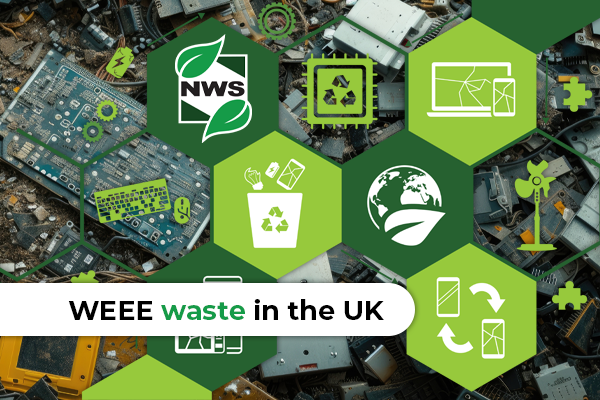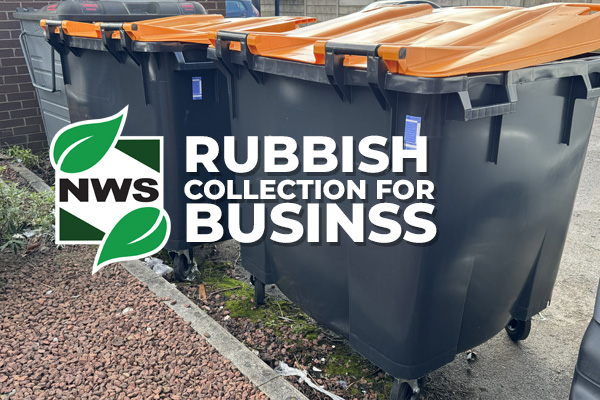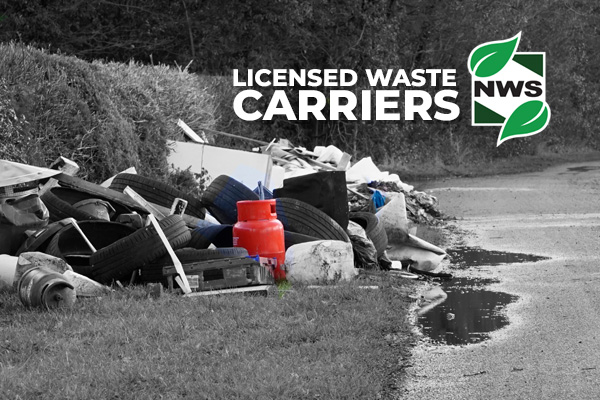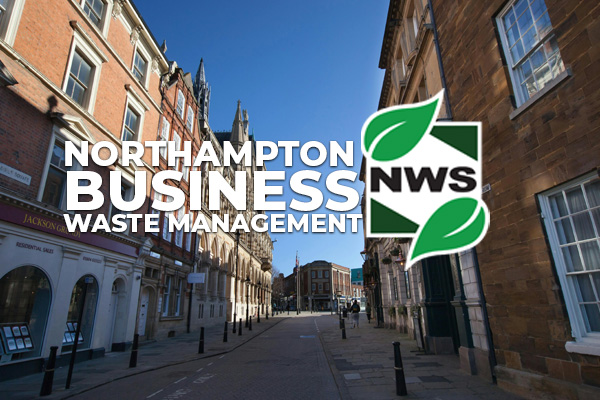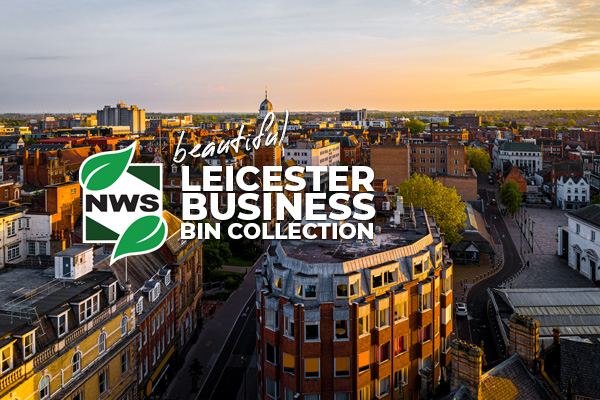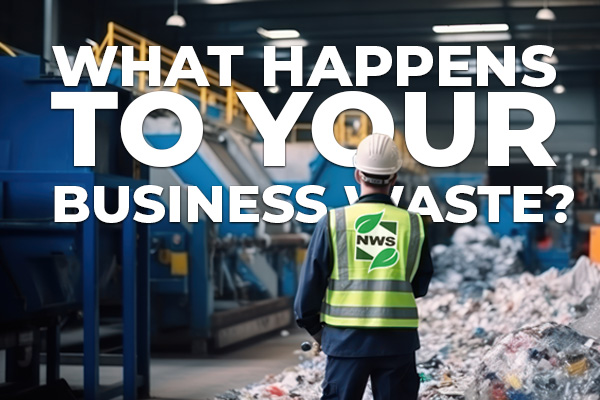Greater London, the vibrant and bustling capital of the United Kingdom. Has made significant strides in its commitment to becoming a greener and more environmentally friendly city. In recent years, the city has implemented various measures to tackle waste management challenges and promote sustainability. Through a change in waste management practices, and learning lessons following the discovery of the largest Fatbergs in human history. With ambitious targets set by the Mayor of London, the city aims to cut food waste by 50% per person and recycle 65% of its waste by 2030. This Nationwide Waste Services article tells a compelling story. We celebrate London’s progress in its bid to be a greener city of the future. Basically highlighting achievements and some of the low points of London’s Waste Problem. Together we look at London’s ongoing efforts, and the work that still needs to be done in terms of waste management.
From Landfill to Recycling and Circular Economy
In the mid-1990s, London relied heavily on landfill sites for waste disposal. With approximately 1,500 active landfill sites across the UK, including Mucking Marshes in Essex. The main landfill target for the capital city’s waste. We could say, London’s waste management practices were in need of a significant overhaul. However, changes to taxes and a shift towards incineration as a cheaper option prompted a change in waste management strategies.
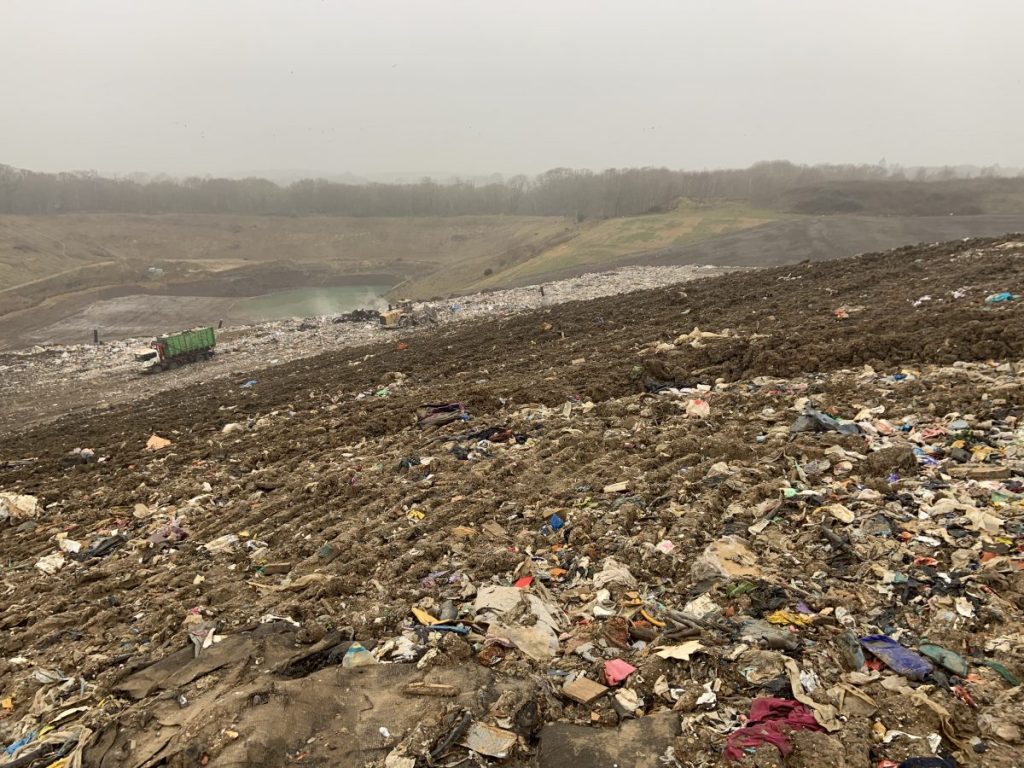
Orange Barges and the Closure of Mucking Marshes Landfill
The memory of orange barges traversing the River Thames daily, is ingrained in the minds of Londoners of a certain age. As London’s rubbish was transported to Mucking Marshes Landfill. Once the largest landfill in Europe. Mucking Marshes played a significant role in London’s waste disposal strategy. However, under the leadership of Mayor Ken Livingstone. A focus on recycling and reduced landfill usage was implemented. Consequently, Mucking Marshes Landfill closed in 2010. This closure marked a turning point in London’s waste management practices. Highlighting a commitment to sustainable waste solutions.
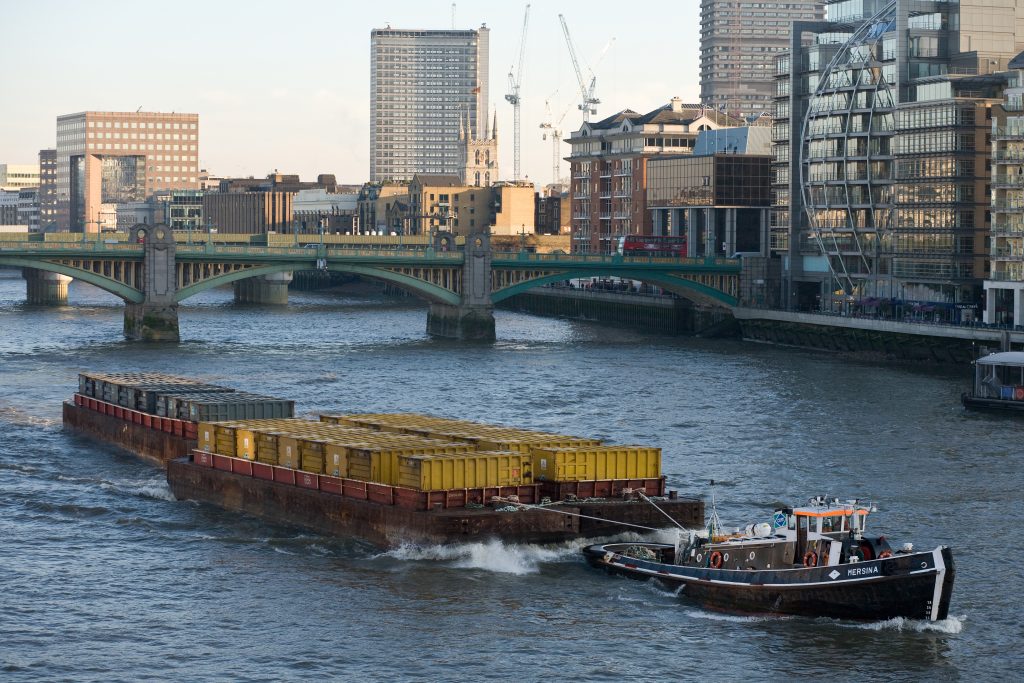
The Mayor’s Targets for Waste Reduction and Recycling to overcome London’s Waste Problem
London’s commitment to sustainability is demonstrated by the ambitious targets set by the Mayor’s Office. Nevertheless By 2030, the goal is to cut food waste by 50% per person and recycle 65% of the city’s waste. By 2025, the target is to achieve a recycling rate of 50%. These targets reflect London’s determination to transition towards a circular economy and reduce its environmental impact.
Current Recycling Rate:
As of 2020/21, London’s recycling rate stood at 29.9%, indicating that there is still work to be done to achieve the set targets. However, this figure also highlights the progress made over the years, as recycling rates have steadily increased.
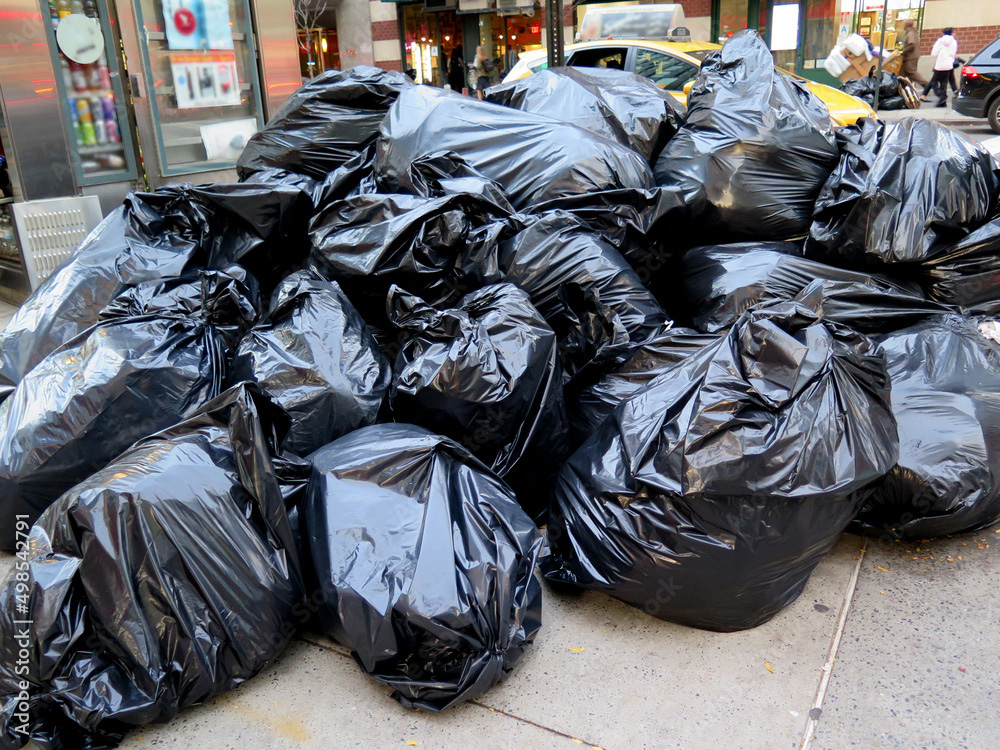
Trade Waste and the Importance of Business Waste Management
Business waste management plays a crucial role in London’s overall efforts to clean up waste and promote sustainability. The efficient management of trade waste is vital for businesses to contribute to the city’s waste reduction targets. And maintain a clean and environmentally friendly working environment.
Statistics on Trade Waste in London
To understand the magnitude of trade waste in London. It is important to consider relevant statistics. According to data from the Greater London Authority, commercial and industrial waste accounted for approximately 33% of the total waste generated in London in 2019/20. Consequently, this emphasises the significant impact businesses have on waste generation. And the importance of their involvement in sustainable waste management practices. Thus alleviating London’s Waste Problem.
Ongoing Efforts and Initiatives
London continues to implement various initiatives. Adding measures to clean up its waste and create a greener future. Markedly, these efforts involve collaboration between the Mayor’s Office, local authorities, businesses, and residents.
The Circular Economy Route Map
The Circular Economy Route Map, launched by the Mayor of London. Outlines a comprehensive strategy to transform London into a circular economy. This roadmap encourages waste reduction, recycling, and resource efficiency, fostering a sustainable and resilient city. This should help solve London’s Waste Problem.
Business Waste Reduction and Recycling Programs
London provides support and resources to businesses. To help them improve their waste management practices. Initiatives such as the Green Procurement Code and the Resource London program. Offer guidance and assistance to businesses in implementing sustainable waste management strategies.
Another of London’s Waste Problems The Fatberg…
The discovery of the London fatberg in September 2017. Lodged firmly beneath the streets of Whitechapel, East London. Marked a significant moment in waste management history. Therefore, shedding light on the dire consequences of improper waste disposal practices. According to reports from Thames Water, the fatberg measured an astonishing 250 meters in length and weighed approximately 130 metric tons. Or 10 London Double Decker Buses, 24 African Elephants and 2,100 humans.
This colossal mass of congealed waste, primarily composed of fats, oils, wet wipes, and other non-biodegradable items, posed severe challenges to sewage infrastructure and raised concerns about its environmental impact.
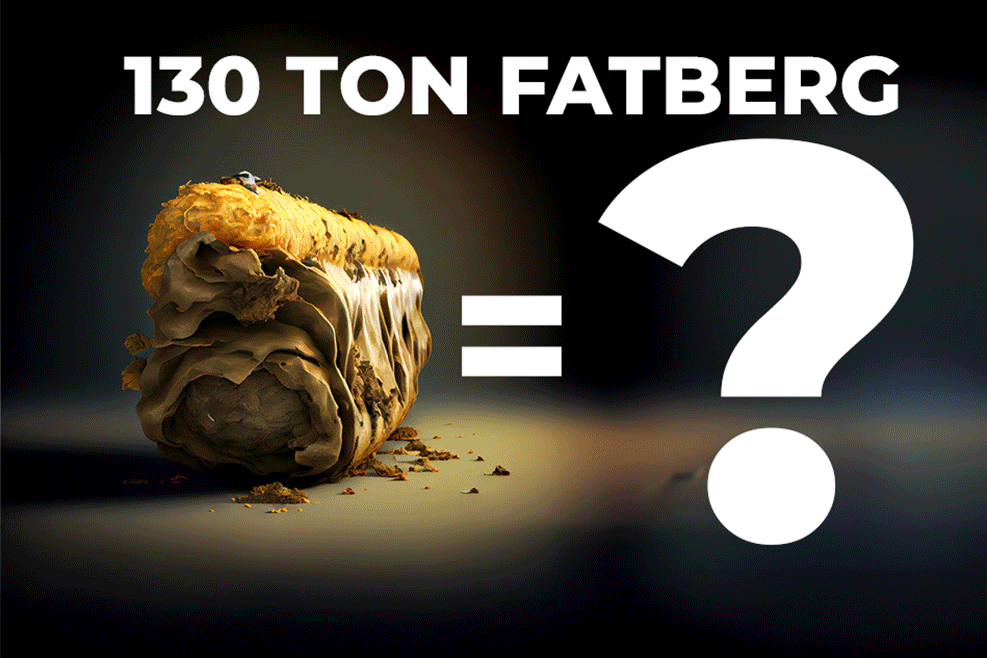

Cause of London’s Waste Problem Fatberg
The formation of the London fatberg was attributed to a combination of factors. Including the flushing of inappropriate items down drains, such as wet wipes and hygiene products. As well as the discharge of fats, oils, and grease (FOG) from restaurants and food establishments [2]. Over time, these materials solidified into a dense and impenetrable mass. Clogging sewage pipes and causing disruptions to wastewater treatment processes.
Impact on London’s Environment
The environmental impact of the London fatberg extended beyond its immediate effects on sewage infrastructure. As the fatberg decomposed, it released harmful gases and chemicals into the surrounding environment. Posing risks to water quality and aquatic ecosystems. Additionally, the removal process required extensive manual labour and specialised equipment, consuming significant resources and energy [3].
How to dispose of a FATBERG
Efforts to address the London fatberg involved a collaborative approach between sewage workers, waste management authorities, and environmental agencies. Thames Water deployed specialized teams equipped with high-pressure jets and hand tools to break apart the fatberg and remove it from the sewer system [4]. The operation, which lasted several weeks, highlighted the complex challenges associated with urban waste management and the need for proactive measures to prevent similar incidents in the future.

London’s Fatberg Legacy
In response to the London fatberg and other fatberg-related incidents. Initiatives aimed at improving waste management practices and public awareness have been introduced. These include public education campaigns on proper waste disposal. Regulations targeting the discharge of FOG from commercial establishments. And investments in sewage infrastructure upgrades [5].
After the Fatberg Cleared…
The London fatberg serves as a sobering reminder of the critical importance of responsible waste management. Furthermore the far-reaching consequences of our actions on the environment. By adopting sustainable practices and working together to address the root causes of waste accumulation. We can mitigate the risk of future fatberg incidents and build a cleaner and more resilient urban environment.
Sources and References Re London’s Waste Problem
To provide accurate and reliable information, the following sources and references were used:
– Greater London Authority: [https://www.london.gov.uk/](https://www.london.gov.uk/)
– The Circular Economy Route Map: [https://www.london.gov.uk/what-we-do/environment/pollution-and-air-quality/creating-circular-economy](https://www.london.gov.uk/what-we-do/environment/pollution-and-air-quality/creating-circular-economy)
– London Datastore: [https://data.london.gov.uk/](https://data.london.gov.uk/)
[1] Thames Water, “Fatberg – The Monster Under London”, https://www.thameswater.co.uk/sitecore/content/tw-live/corporate/About-us/24510-fatberg-the-monster-under-london
[2] BBC News, “London’s ‘Fatberg’ Dissected by Museum of London” https://www.bbc.com/news/uk-england-london-46497267
[3] The Guardian, “London’s Fatberg Threatens to Spawn Yet More Fatbergs”, https://www.theguardian.com/environment/2018/apr/22/londons-fatberg-threatens-to-spawn-yet-more-fatbergs
[4] CNN, “London’s ‘Monster Fatberg’ to Be Turned into Museum Exhibit”, https://www.cnn.com/2018/06/15/europe/london-fatberg-museum-exhibit-intl/index.html
[5] The Telegraph, “Fatbergs: What Are They and How Can We Get Rid of Them?”, https://www.telegraph.co.uk/news/0/fatbergs-what-are-they-and-how-can-we-get-rid-of-them/
Finally about London‘s Waste Problem
London’s journey towards becoming a greener and more environmentally friendly city is commendable. Through the closure of landfills like Mucking Marshes. The implementation of ambitious targets, and the ongoing efforts to promote sustainable waste management practices. London has made significant progress. However, there is still work to be done to achieve the Mayor’s targets for waste reduction and recycling. Businesses play a vital role in this process. Their commitment to efficient waste management is crucial.


